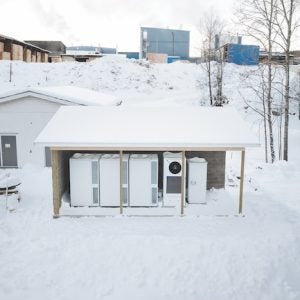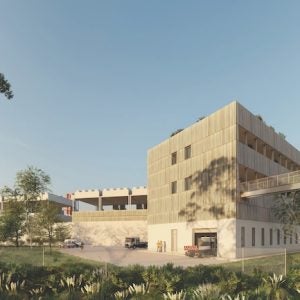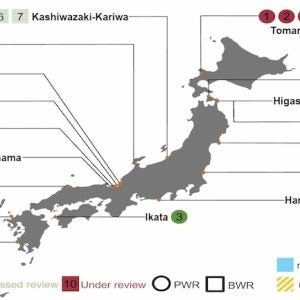
Hydrogen is a highly reactive fuel requiring special control and combustor design features to deal with high flame speed and avoid flashback while at the same time maintaining low NOx emissions and stable combustion dynamics. Thomassen Energy/PSM have proven technologies for addressing these issues, and since 2018 can point to “stable and flexible sub-9ppm NOx operation from 0 to 35% H2 by volume blended with natural gas.”
The technologies offered by Thomassen Energy/PSM include: the FlameSheet™ combustor (see Modern Power Systems, September 2017, pp 30-33), which can operate at “up to 60% hydrogen by volume today”, with development underway to 100%; the LEC-III™ combustion system platform, capable of up to around 50% H2; and the addition of AutoTune digital combustion control.
FlameSheet™ is compatible with a wide range of gas turbine types between 1 MW and 300 MW, while the LEC-III™ retrofit is targeted at OEM Frame 6B, 7E and 9E, as well as 501B6 and 501D5 turbines.
Today, there are 16 OEM 7F and 501F gas turbines operating with FlameSheet™, with the platform selected up to now for its operational attributes rather than the fuel flexibility it can provide.
The ultra-low-NOx LEC-III™ can be found in almost 100 gas turbines around the world. Among notable Thomassen Energy/PSM hydrogen projects, past, present and planned, are the following:
- FlameSheet™ testing at DLR (German Aerospace Centre) high pressure rig, Cologne. FlameSheet™ F-class combustor testing at full engine pressure and temperature. Demonstrated (to date) 60+% vol H2 with low single digit NOx emissions and enhanced operational turndown.
- High hydrogen retrofit consortium programme, led by Thomassen Energy, with Dutch government subsidy for phases 1 and 2. A consortium consisting of equipment manufacturers (Thomassen Energy, PSM, OPRA), academia/research (TU Delft, TU Eindhoven, DLR Cologne) and end-users (Vattenfall, GETEC (Emmtec), Nobian, Dow, Polenergia (Elektrocieplownia Nowa Sarzyna)) has been established. The aim is to develop a gas turbine combustor retrofit for fuel flexible operation from 100% natural gas to 100% hydrogen, and all points between, suitable for gas turbines in the range 1-300 MW, employing a single scalable combustor platform based on FlameSheet™.
Fuel flexibility is considered essential to minimise operational risks in the event of hydrogen supply constraints.
The first phase of the project, 2019-20, focused on atmospheric testing of a FlameSheet combustor adapted to the OPRA 1.8 MW OP16 gas turbine. From the tests, performed at OPRA’s Hengelo test rig, it was found that it was possible to achieve 100% hydrogen combustion with sub 9 ppm NOx emissions.
In the second phase, completed 2021, consisting of design upgrade and high pressure testing, these results were repeated and improved upon during full pressure/ temperature tests at DLR, Cologne, with up to 100% hydrogen.
The next step is to prove the same results are achievable with hardware sized for Frame 5/6B. This is scheduled for the coming months.
- 1 x Frame7F, USA. FlameSheet™ combustor retrofit. 5% hydrogen (customer’s supply limit). Enhanced turndown. In operation since 2018.
- 3 x Frame9E, Dow, Terneuzen, Netherlands. HyFlex LEC-III™ retrofit, with AutoTune. Up to 35% H2, with NOx 9 ppm or less. Operating since 2018.
- 1 x Frame7F, USA. FlameSheet™ combustor retrofit. Up to 40% H2 employing Phillips 66 refinery off gas supply, part of power plant operator JERA’s zero CO2 plan. Commissioning scheduled to start at the end of 2022.
- 1 x Frame7E, KOWEPO plant, Daesan, Korea. FlameSheet™ combustor retrofit. Supportive of Korean national strategy to create a hydrogen “ecosystem” by 2040. Aiming initially for 50% vol hydrogen (2023). Fuel: refinery off gas supplied by Hanwha-Total JV petrochemical plantandothersources.
- 1 x Frame 9E. Uniper Rotterdam Capelle (RoCa) plant, unit 3, Netherlands. HyFlex LEC-III™ combustor retrofit, with AutoTune.
Installation scheduled for early 2023. In 2023 Uniper plans to switch from Groningen natural gas to a high calorific value gas supply, and “anticipates blending the new gas supply with upwards of 30% H2.”
Uniper says the retrofitted HyFlex LEC-III™ combustion system will be capable of handling this enhanced fuel flexibility requirement with ultra-low emissions when coupled with the AutoTune system.
“Our H2 fuel-flex retrofit solution selected by Uniper for RoCa3 has been operating successfully on three Frame 9E turbines elsewhere in the Netherlands since 2018 with hydrogen (up to 35% H2 demonstrated) fuel blending”, notes Peter Stuttaford, CEO of Thomassen Energy. “These projects confirm our vision in supporting the power industry’s urgent net-zero carbon reduction requirements. Having retrofit options for the installed fleet of gas turbines today, which will ultimately allow operational flexibility with 0 – 100% H2, will provide clean, carbon free, firming capacity to balance the inherent intermittency of grid-scale renewable generation.”






